
On June 6, 2021, Kamala Harris departed Washington on her first official foreign trip since being sworn in as vice president. When she reached her destination, Guatemala City, the country’s Foreign Affairs Minister Pedro Brolo met her at the foot of the stairs from the aircraft. The two then walked down a red carpet flanked by a military honor guard from the Guatemalan Army and that honor guard was armed with an old, familiar warrior: the M1 Garand.
But Vice President Harris is not the only 21st-century U.S. leader to be greeted by a foreign military honor guard with M1 rifles. In November 2017, President Donald J. Trump traveled to Tokyo to meet with Japanese Prime Minister Shinzo Abe. While there, both men visited the Ministry of Defense where the Japan Ground Self-Defense Force Special Honor Guard and its Garand rifles waited. Although best remembered for the contribution it made during World War II, the M1’s service history has reached beyond the threshold of the 21st century all the way to the present day.
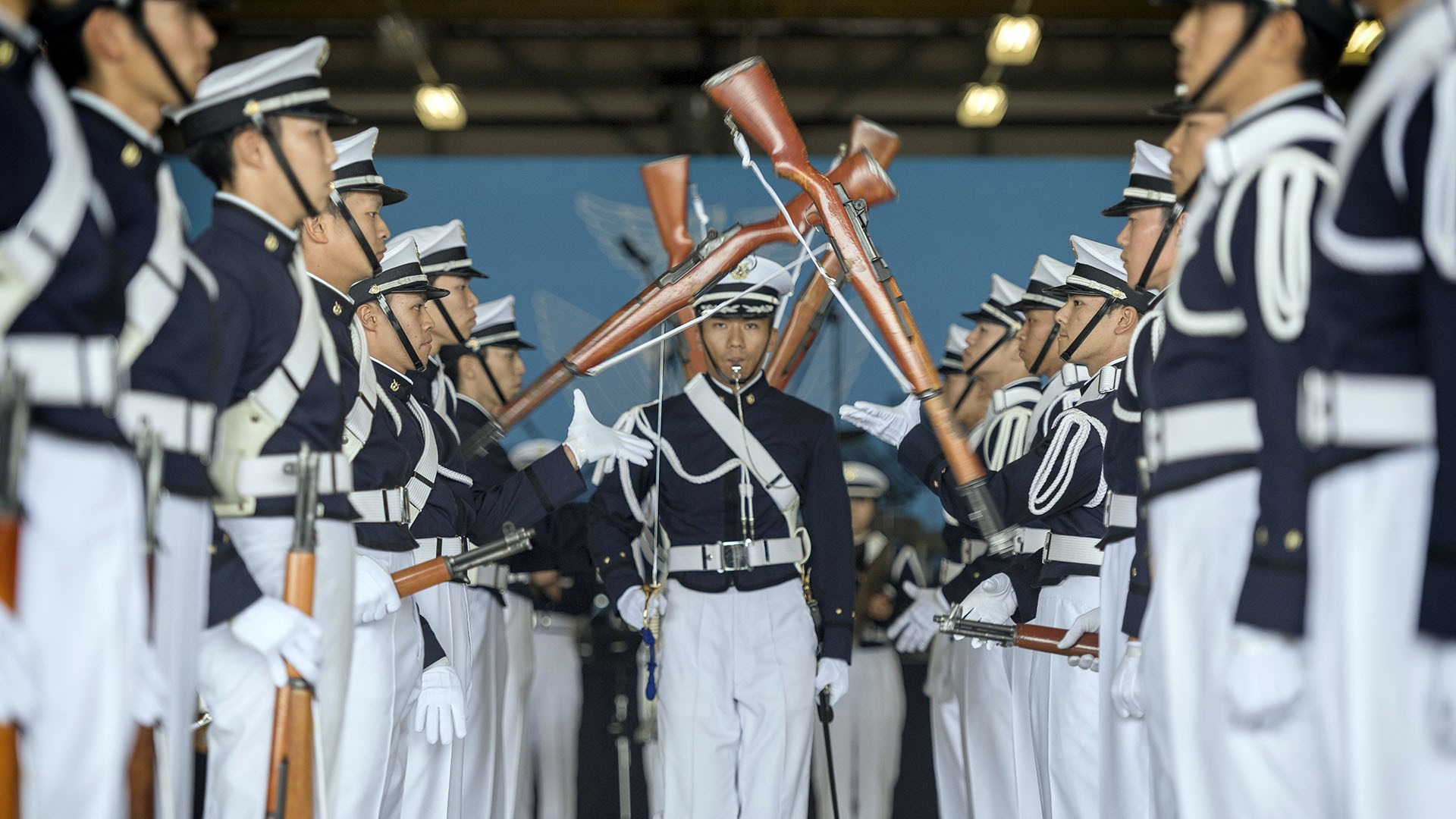 Japan Air Self-Defense Force Honor Guard members participate in a drill performance during the 2017 Friendship Festival, Sept. 17, 2017, at Yokota Air Base, Japan. (U.S. Air Force photo / Airman 1st Class Juan Torres – 170917-F-KG439-0111).
Japan Air Self-Defense Force Honor Guard members participate in a drill performance during the 2017 Friendship Festival, Sept. 17, 2017, at Yokota Air Base, Japan. (U.S. Air Force photo / Airman 1st Class Juan Torres – 170917-F-KG439-0111).
In some European, Asian and South American countries, the Garand is still being used for ceremonial purposes, which is why American-made M1s greeted Vice President Harris in Guatemala City and President Trump in Tokyo. But John Garand’s famous semiautomatic rifle continues to do more than just arm the occasional honor guard welcoming a visiting dignitary. It is still being used to train troops around the world, and it has even been used in combat during recent conflicts.
Ceremonial Use
The M1 rifle has achieved a unique longevity for drill and ceremonial purposes that came into being for three reasons. First of all, it is anatomically practical for a semiautomatic service rifle because it does not incorporate a detachable magazine that protrudes below the floor plate. That makes the Garand well-suited for the “shoulder arms” position in a way that rifles like the M14, the FAL and the G3 just are not.
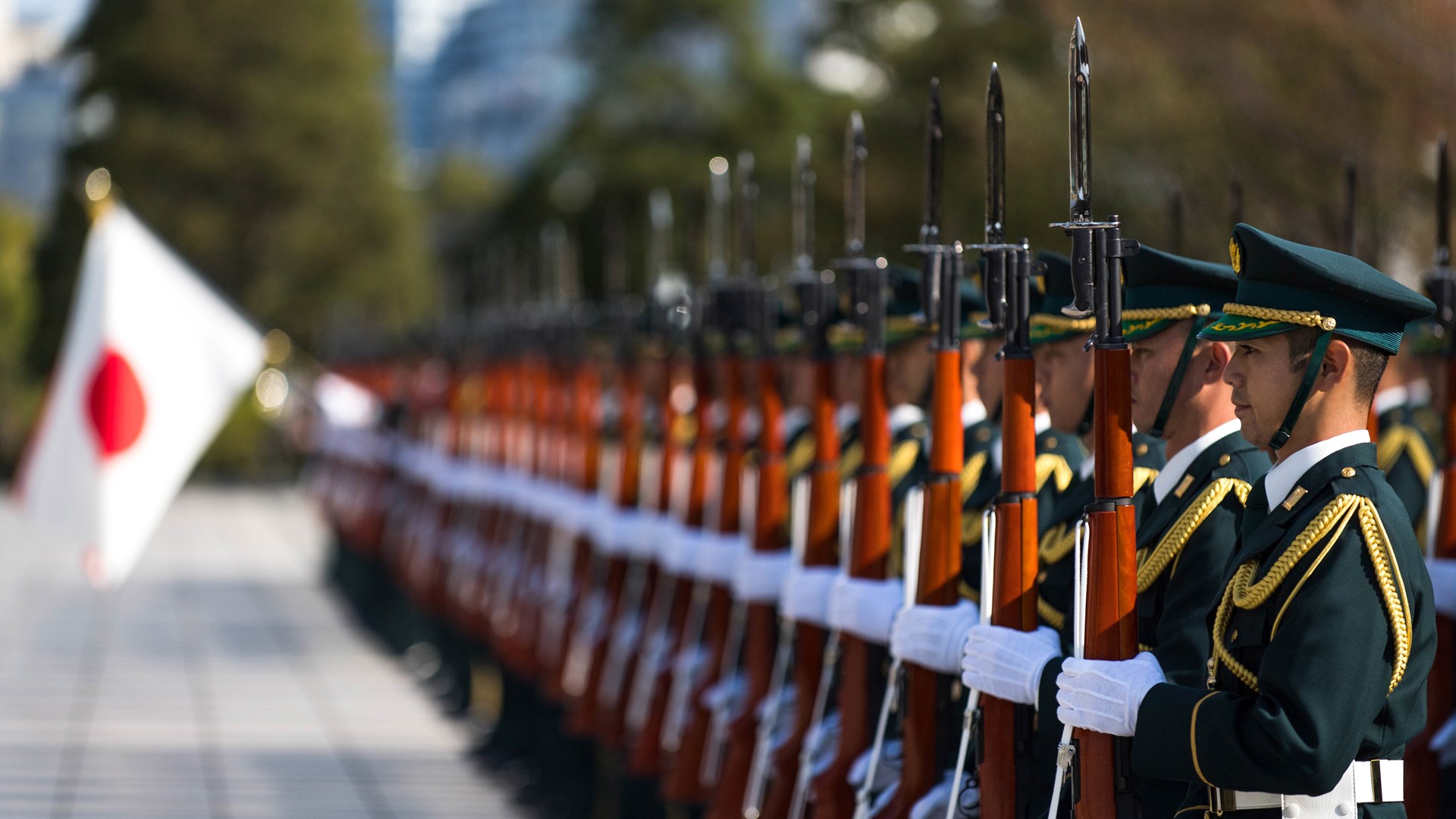 Members of the Japanese Ground Self-Defense Force Special Honor Guard stand in formation at the Ministry of Defense in Tokyo on Nov. 7, 2016. The JGSDF held a welcoming ceremony for U.S. Air Force Chief of Staff Gen. David L. Goldfein as part of his first visit to the region as Air Force chief of staff. (U.S. Air Force photo by Staff Sgt. Michael Smith).
Members of the Japanese Ground Self-Defense Force Special Honor Guard stand in formation at the Ministry of Defense in Tokyo on Nov. 7, 2016. The JGSDF held a welcoming ceremony for U.S. Air Force Chief of Staff Gen. David L. Goldfein as part of his first visit to the region as Air Force chief of staff. (U.S. Air Force photo by Staff Sgt. Michael Smith).
Secondly, the U.S. government mass produced more than five million examples of the M1 between 1937 and 1957, so there are plenty of examples of it out there. Thirdly, the Garand is a handsome firearm that looks sharp–especially with a fixed bayonet. After World War II, the U.S. government loaned and sold M1s by the thousands to allied nations around the world, including Guatemala and Japan.
In addition to the M1s that greeted Vice President Harris and President Trump, the Garand also currently guards the Tomb of the Unknown Soldier and Presidential Mansion in Athens, Greece, and chromed examples of the rifle guard the National Revolutionary Martyrs’ Shrine in Taipei, Taiwan. In some countries though, the M1 continues to serve in a less glamorous albeit more practical capacity.
Training Use
During the 1950s, Argentina purchased warships and submarines from the U.S. in a transaction that also included several thousand M1 rifles. By the mid-1960s though, the country had transitioned to the FAL rifle, the MAG-58 machine gun and the 7.62×51 mm NATO cartridge. With that being the case, the .30-cal. M1s were no longer logistically practical, even though they were still in serviceable condition.
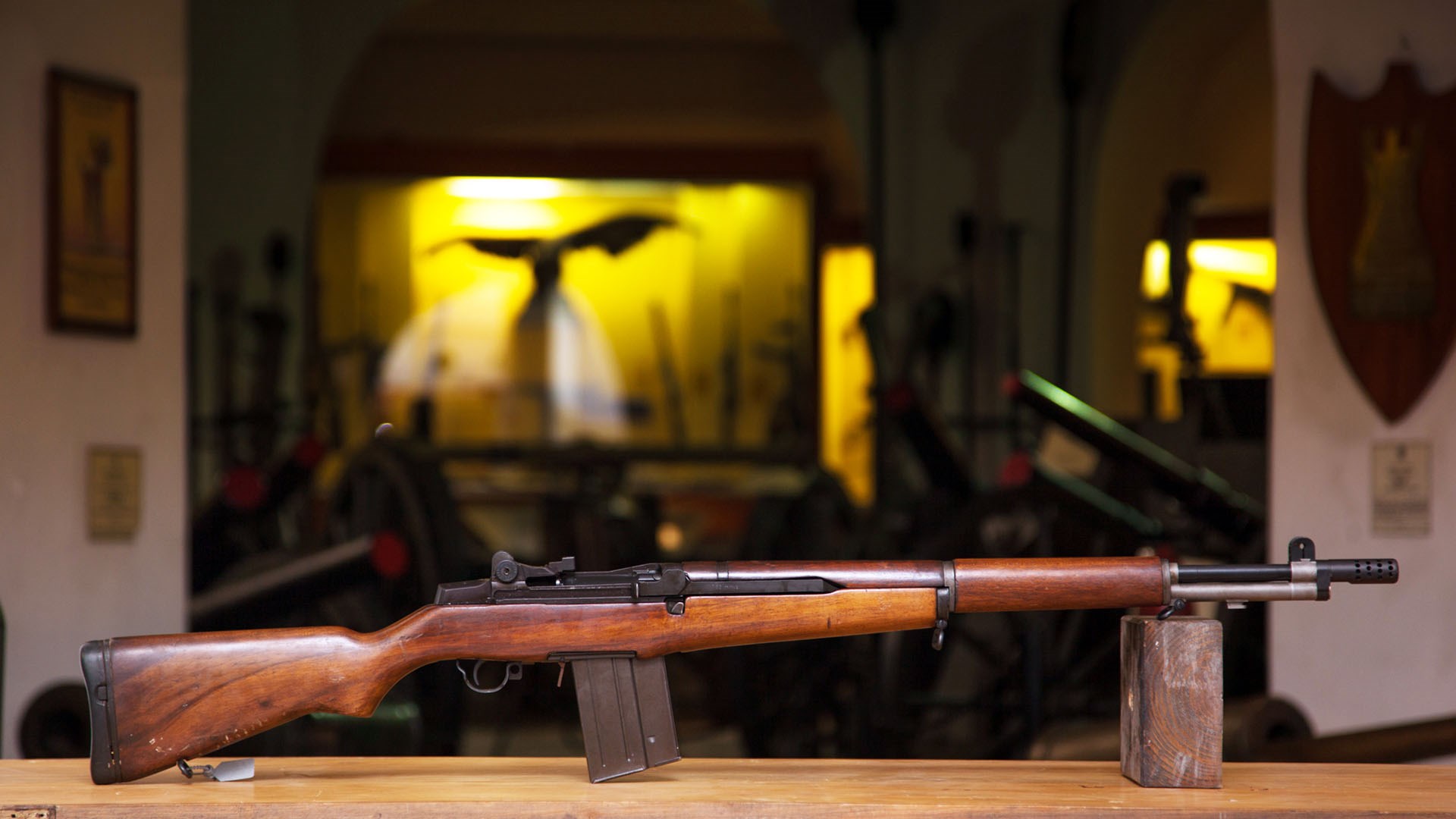 Right side view of Beretta BM59E rifle SN #5347812 (formerly Springfield M1 rifle SN #5347812).
Right side view of Beretta BM59E rifle SN #5347812 (formerly Springfield M1 rifle SN #5347812).
To modernize the guns, and thereby extend their service life, the Argentine government paid Beretta to convert them to select-fire rifles feeding the 7.62×51 mm NATO cartridge from a 20-round detachable box magazine. The converted rifles, now designated BM59E, remain in service today with the Argentine Navy and are used by students in the Special Marksmanship Course of the Argentine Marine Corps.
Although it was never intended to be one, the Socialist Republic of Vietnam is also a contemporary user of the M1 rifle. With the fall of the Republic of (South) Vietnam in 1975, thousands of M1s were captured by communist forces. Those rifles have been in Vietnam ever since and they are used today by the People’s Army to train militia units. The Garand has also been seen recently at the King Abdullah II Special Operations Training Center in Amman, Jordan, as well as the Philippine Maritime Institute in Manila.
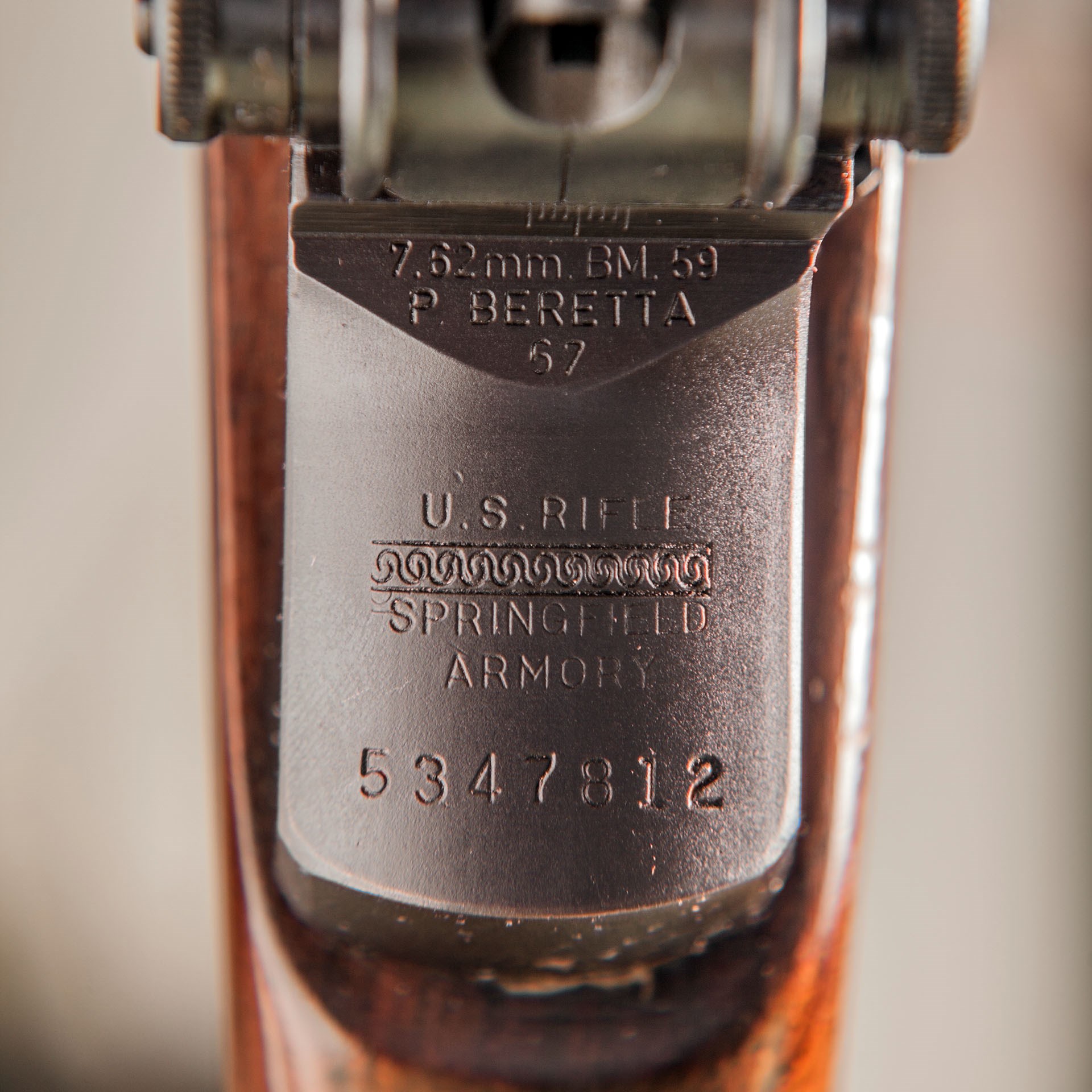
The receiver heel of SN #5347812 shows the special roll markings that Beretta applied as a part of its BM59E conversion. Note that “7.62mm BM.59, P. BERETTA, 67” has been roll-marked on the triangular shelf directly behind the rifle’s rear sight base. In addition to that, Beretta obliterated the second line of the existing M1 Garand markings by overstriking “CAL. 30 M1” with a decorative motif.
The Royal Thai Army’s Reserve Force Students learn close-order drill with M1s that are designated the Type 88 self-loading rifle. So even after more than eight decades, the Garand is still a tool being used to teach troops the martial skills they will need in uniformed service.
Contemporary Combat Use
Although the U.S. military has not used it as a battle implement for a half century, that does not mean that the Garand rifle’s combat history ended with the war in Vietnam. In fact, that history has continued writing itself through the decades to include foreign military use reaching beyond the Cold War all the way to the Global War on Terror.
Conflict zones in Africa, Central America, South America, the Caribbean, and various parts of Asia have all seen it in action recently and, in at least one country, continue to see it. M1s made by International Harvester were a part of Iran’s Islamic Revolution in 1979 and they also did some fighting during the war with Iraq that immediately followed it. The Garand was used in a violent coup d’état in Liberia in 1980 and it could be seen arming Local Civil Defense Patrols during the Guatemalan Civil War the following year.
In 1982, some of the Argentine Navy’s M1/BM59E conversions were present in the Falklands during the brief war with the United Kingdom for control of the islands. The Garand was subsequently observed in Iraq after the 2003 invasion, in Haiti and Lebanon in 2012, and Yemen in 2015, but the hotspot where the M1 has seen its most recent action is the Republic of the Philippines.
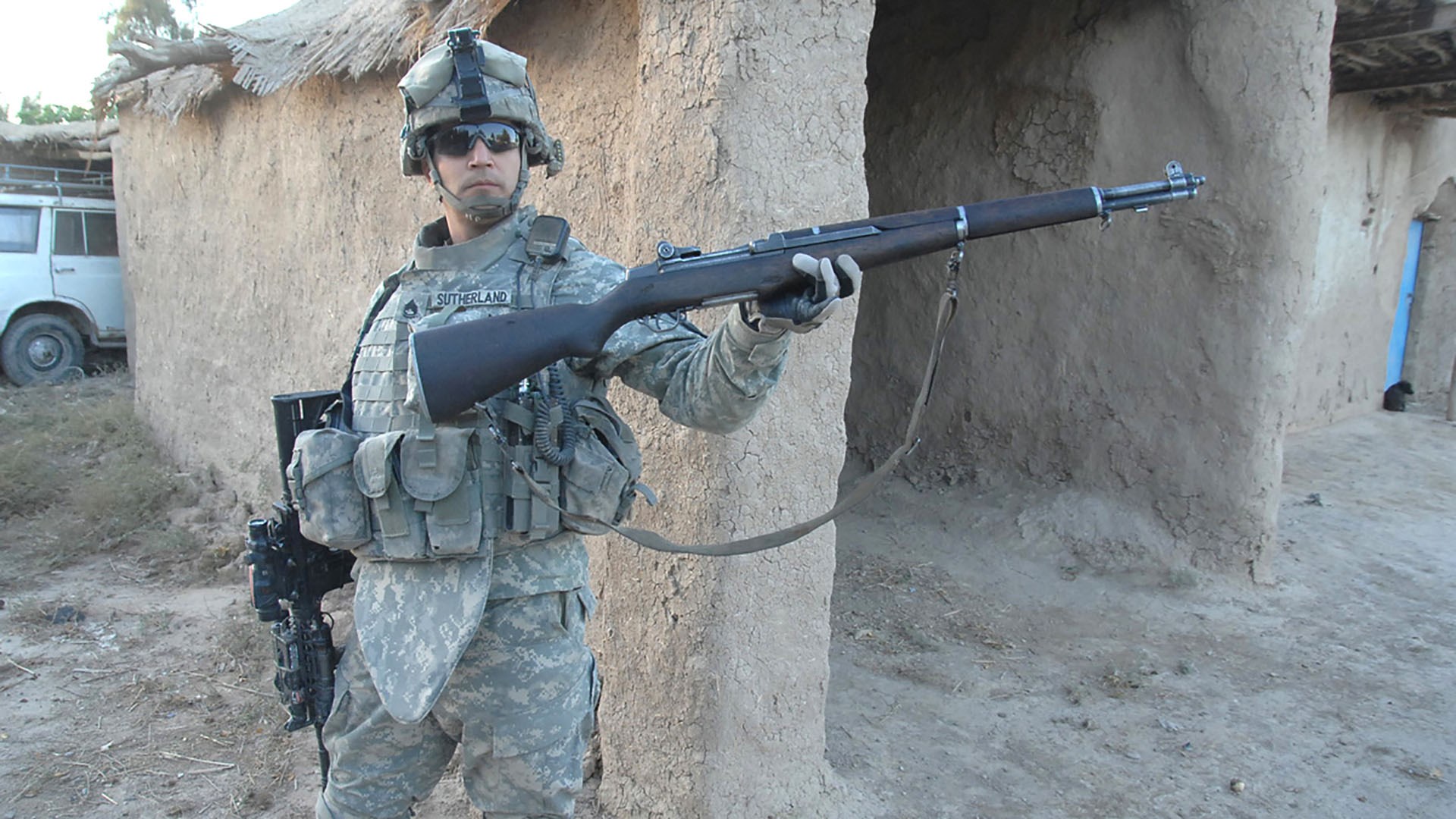 A U.S. Army Soldier displays an M1 rifle discovered in a suspected insurgent’s home in Western Muqdadiyah, Iraq, Dec. 12, 2007. The Soldier is from Alpha Company, 2nd Battalion, 23rd Infantry Regiment, 3rd Brigade Combat Team, 2nd Infantry Division. (U.S. Army photo by SPC Shawn M. Cassatt).
A U.S. Army Soldier displays an M1 rifle discovered in a suspected insurgent’s home in Western Muqdadiyah, Iraq, Dec. 12, 2007. The Soldier is from Alpha Company, 2nd Battalion, 23rd Infantry Regiment, 3rd Brigade Combat Team, 2nd Infantry Division. (U.S. Army photo by SPC Shawn M. Cassatt).
At the start of the Cold War, the U.S. government loaned thousands of M1s to the Philippine government through the Military Assistance Program (MAP). This was because the Philippine Army had to be rebuilt and completely rearmed following three years of Japanese occupation during World War II. Although the Japanese were gone after 1945, the need for military weapons became critical when communist insurgents launched the Hukbalahap Rebellion in 1946.
Thanks in part to U.S. military aid, that uprising officially ended in 1954 but communist sympathies did not just go away–they remained dormant for over a decade and then flickered to life again in 1969. Within less than a decade, the old communist insurgency had given way to a new Islamist insurgency. At first the new insurgents were simply a group of separatists operating on Mindanao, Palawan, and the islands of the Sulu Archipelago under the name Moro Islamic Liberation Front (“MILF”), but they eventually became the notorious Jihadist militant group known as Abu Sayyaf.
To oppose the growing threat of MILF and Abu Sayyaf, the Philippine government created a counterinsurgency force in 1987 known as the Citizen Armed Force Geographical Units (CAFGU). These units were composed of local, able-bodied citizens who were armed with MAP guns, notably the M1 rifle. Despite CAFGU counterinsurgency operations though, Abu Sayyaf‘s strength continued to grow through the 90s and beyond the turn of the 21st century.
After July 2014, the group affiliated with the Islamic State and eventually brought the savagery of ISIS to Mindanao. In May 2017 Abu Sayyaf took over the city of Marawi, starting the largest urban battle fought on Philippine soil since World War II. In vicious house-to-house fighting, local ISIS-inspired militants briefly created a Caliphate stronghold that they attempted to defend with a variety of firearms that included captured examples of the M1 Garand rifle.
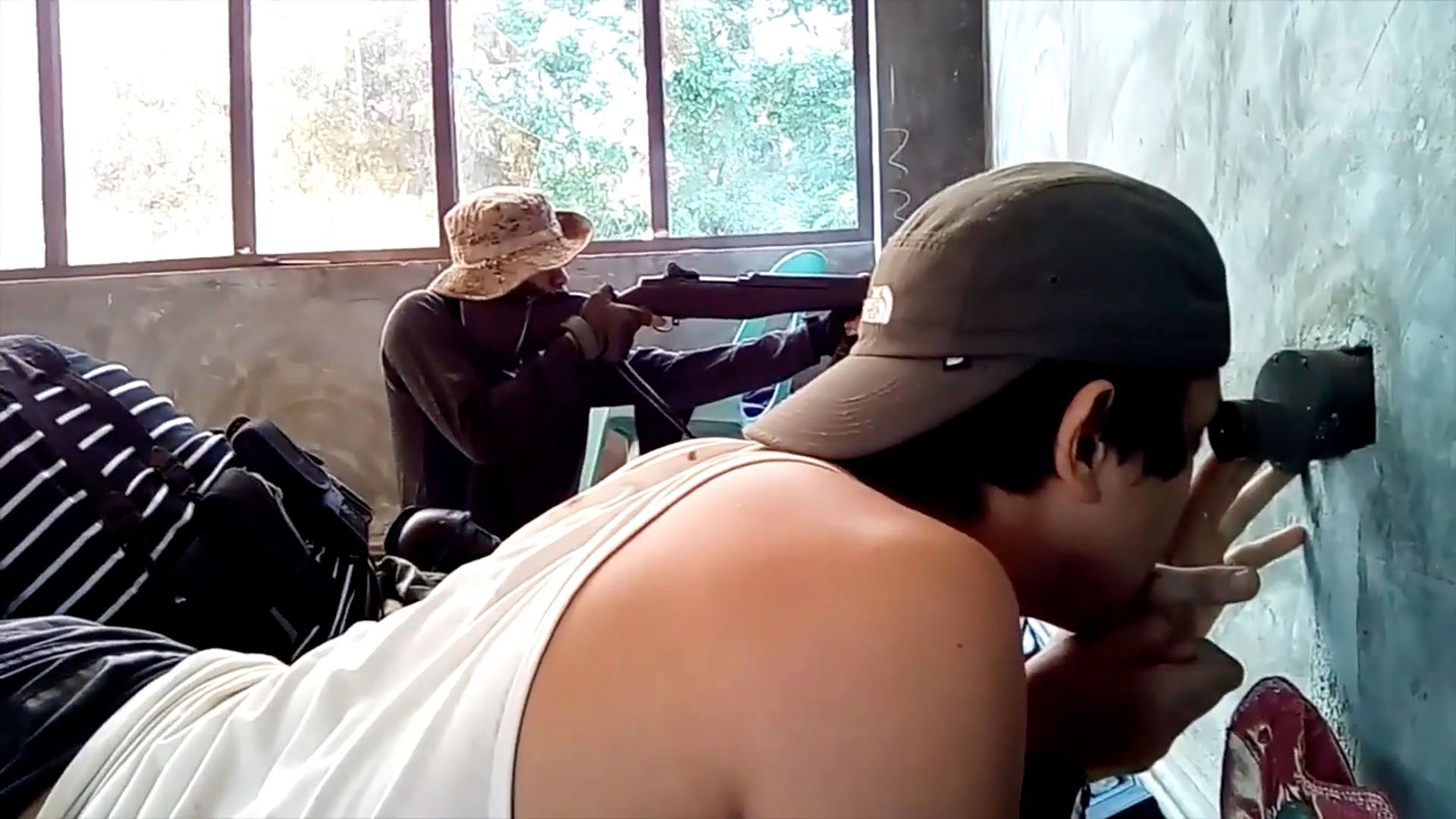
A pair of Abu Sayyaf militants fighting Philippine troops with an M1 rifle in July 2017 during the 153-day urban battle for the city of Marawi on the island of Mindanao.
Although it took 153 days to overpower them, on October 17, 2017, President Rodrigo Duterte declared Marawi “liberated from terrorist influence.” By then the city had been reduced to rubble, but the battle was at an end and Abu Sayyaf had been dealt a major setback. The Philippine government then instituted martial law and the military moved swiftly to disarm what was left of the insurgents on southern Mindanao and on the islands of the province of Sulu. Soon members began to surrender to the government and turn in their weapons.
Throughout 2018 and 2019, the military recovered caches of small arms in significant quantities, much of which had been loaned to the Philippine government by the U.S. almost seventy years prior. Although each stockpile was a little different, they all nevertheless consisted of M14s, M16s, M79 grenade launchers, mortars, machine guns and, of course, M1 rifles. As tempted as we might be to use the past tense when referring to it, we simply can’t because the M1 is a rifle that belongs to the present – and not just for collecting, shooting matches, drill teams, training detachments and honor guards.
There are probably more Garand rifles still hidden in the jungles of the Philippines just waiting for an Abu Sayyaf revival. For that matter, there are probably others still in the hands of Houthi rebels in Sana’a or Shi’ite clans in Beirut. That means that, even as ceremonial Guatemalan M1s greeted the Vice President on June 6, there are examples of the rifle secreted in far-off conflict zones that will eventually write the next chapter in the Garand’s fighting history.